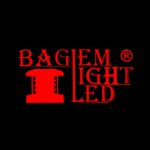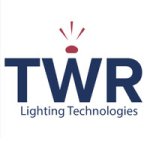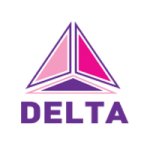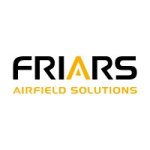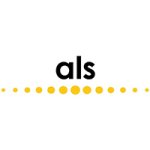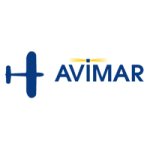Table of Contents Hide
- 1 Aeronautical ground lighting
-
2
Runway lighting
- 2.1 Runway edge lights
- 2.2 Threshold lights
- 2.3 End lights
- 2.4 Touchdown zone lights
- 2.5 Centerline lights
- 3 Taxiway lighting
- 4 Approach and visual aids
-
5
Apron and ramp lighting
- 5.1 Apron floodlights
- 5.2 Apron edge lights
- 5.3 Guidance lights
- 5.4 Signage lights
- 6 Obstruction lights
- 7 Airport beacon lights
- 8 LED lighting
- 9 Enhanced features
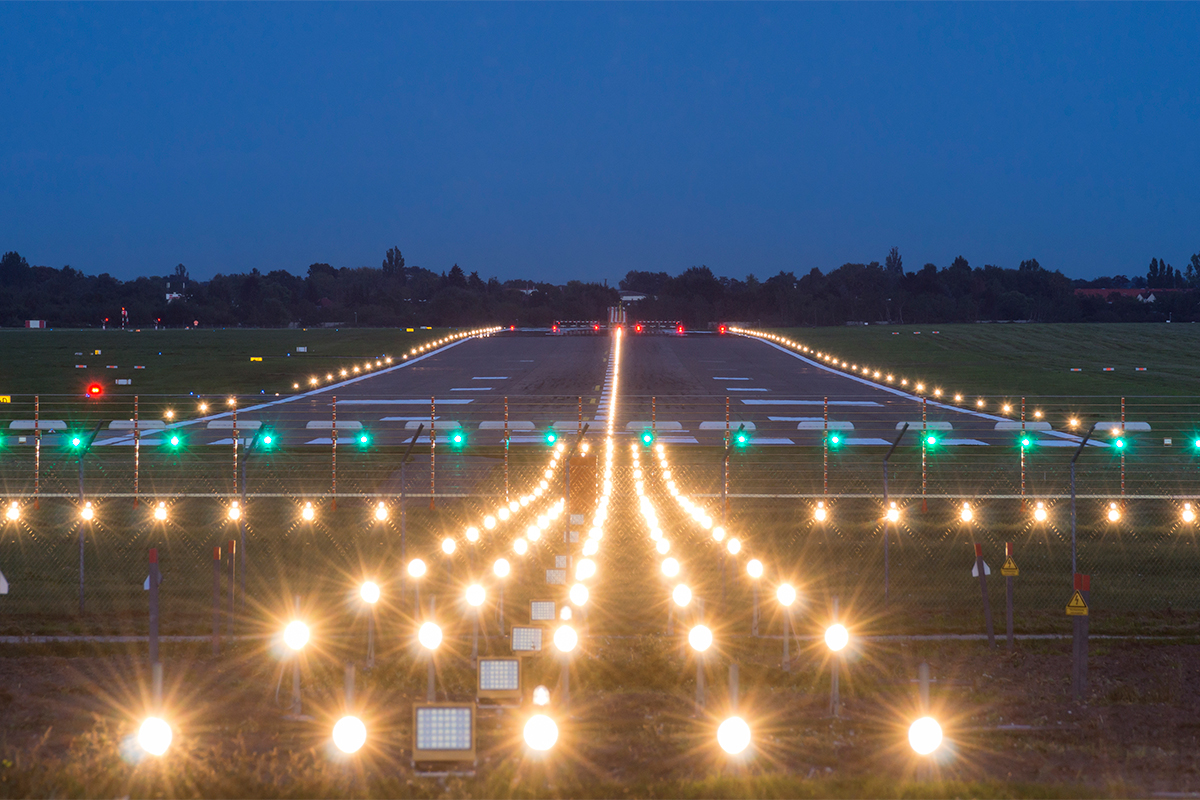
Aeronautical ground lighting
Airport lighting, also known as aeronautical ground lighting (AGL), refers to the array of lighting systems and devices installed at airports to facilitate safe and efficient aircraft operations, both on the ground and in the air during all phases of flight. The airport lighting system provides crucial visibility for pilots, air traffic controllers, and ground personnel, especially during low light conditions such as night-time operations or adverse weather. Clear visibility of runways, taxiways, and other critical areas enables pilots to navigate accurately and make informed decisions. By providing clear visual cues and guidance, pilots can navigate the airport environment with confidence, reducing the risk of accidents and improving overall operational efficiency. Airport lighting supports aircraft operations during various phases of flight, including takeoff, landing, taxiing, and parking. Different types of lighting systems are deployed to assist pilots in each of these critical stages. Airport lighting systems adhere to international standards and regulations established by organizations like the International Civil Aviation Organization (ICAO) and the Federal Aviation Administration (FAA). These standards ensure consistency and uniformity in airport lighting design and operation worldwide.Airport lighting is indispensable for maintaining safe and efficient aircraft operations within the airport environment, promoting the safety of passengers, crew, and ground personnel, and supporting the smooth functioning of the aviation industry as a whole. Runway lights, taxiway lights, and other lighting aids guide pilots along designated paths, helping them navigate complex airport layouts safely. These lights provide visual cues for takeoff, landing, taxiing, and parking, reducing the risk of runway incursions, collisions, and navigational errors. Runway edge lights and taxiway lights delineate the boundaries of runways and taxiways, enhancing situational awareness for pilots. These lights help pilots maintain alignment and avoid inadvertently veering off course, especially during low visibility conditions. By facilitating clear and efficient aircraft movement, airport lighting contributes to the overall operational efficiency of the airport. Efficient taxiing, rapid turnaround times, and timely departures and arrivals are essential for optimizing airport capacity and minimizing delays. During emergencies such as aircraft evacuations or incidents, airport lighting plays a critical role in providing illumination for emergency responders and facilitating the safe evacuation of passengers and crew. Emergency lighting systems guide evacuees to exits and emergency assembly points, enhancing overall safety and emergency response capabilities.
Runway lighting
Runway lighting enhances visibility for pilots, especially during low-light conditions, nighttime operations, or adverse weather such as fog, rain, or snow. By illuminating the runway environment, these lights help pilots see the runway's boundaries, markings, and other important features, reducing the risk of runway incursions, veer-offs, or other safety incidents. Runway lighting helps pilots maintain spatial awareness and accurately judge the aircraft's position, altitude, and alignment with the runway. By providing visual references along the runway's length and width, these lights assist pilots in maintaining proper alignment during takeoff, landing, and taxiing, ensuring safe and precise aircraft operations. Runway lighting aids pilots in aligning the aircraft with the runway's centerline during approach and landing. Centerline lights, threshold lights, and touchdown zone lights provide visual cues to help pilots establish the correct approach path and touchdown point, reducing the likelihood of runway excursions or off-center landings. Runway lighting enhances pilots' depth perception during landing, allowing them to judge the aircraft's altitude and descent rate accurately. By illuminating the touchdown zone and runway markings, these lights help pilots gauge the aircraft's height above the runway surface and adjust the descent rate accordingly, facilitating smooth and precise landings. Runway lighting systems mark critical areas of the runway, including the threshold, touchdown zone, and runway ends, to provide pilots with essential visual cues for safe takeoff and landing. Threshold lights indicate the beginning of the runway, while end lights mark its termination, helping pilots identify the runway's dimensions and orientation relative to the aircraft's position. Runway lighting enhances safety by reducing the risk of runway incursions, collisions, and other accidents during aircraft operations. By providing clear visual guidance and marking important runway features, these lights enable pilots to navigate the runway environment safely and effectively, even in challenging conditions.Runway edge lights
Runway edge lights provide pilots with a clear visual indication of the lateral limits of the runway. By marking the edges of the runway with lights, pilots can easily distinguish between the paved surface of the runway and the surrounding terrain or grass areas, even during low-light conditions or nighttime operations. During takeoff, landing, and taxiing, runway edge lights help pilots maintain proper alignment with the runway's centerline. By providing a reference point for lateral positioning, these lights assist pilots in staying within the designated runway surface and avoiding deviations that could lead to runway excursions or safety hazards. Runway edge lights enhance visibility for pilots, especially during low-visibility conditions such as fog, rain, or snow. The continuous row of lights along the runway's edges increases contrast and visibility, making it easier for pilots to discern the runway's lateral boundaries and maintain spatial awareness during critical phases of flight. The spacing and arrangement of runway edge lights also help pilots gauge their altitude and descent rate during landing. By observing the relative movement of the lights as the aircraft approaches the runway, pilots can accurately judge their height above the runway surface and adjust the descent rate accordingly, facilitating smooth and precise landings. In addition to defining the runway's lateral limits, runway edge lights also help pilots identify taxiways and other airport features adjacent to the runway. By observing the configuration and color of the lights, pilots can distinguish between the runway and taxiway surfaces, aiding in navigation and preventing confusion during ground operations.Threshold lights
Threshold lights aid pilots in aligning their aircraft properly for landing. As pilots approach the runway, these lights provide a visual reference point to ensure that they are on the correct approach path and aligned with the runway centerline. Threshold lights are typically white in color and may be steady-burning or flashing, depending on the airport's lighting configuration. Some threshold lights may also have sequenced flashing patterns to provide additional visual cues to pilots. In addition to aiding pilots during landing, threshold lights also enhance the overall visibility of the runway environment. Their bright illumination ensures that the beginning of the runway is clearly visible to pilots from a distance, further assisting in safe and precise landings.End lights
End lights are installed at both ends of the runway, marking the extremities of the landing surface. They are typically positioned in a linear arrangement along the edges of the runway, extending from the threshold lights to the runway's physical end. End lights provide pilots with additional visual cues to help them orient themselves with the runway, especially during periods of low visibility such as fog, rain, or darkness. By delineating the runway's boundaries, end lights assist pilots in maintaining proper alignment during takeoff, landing, and taxiing maneuvers. End lights are typically white or yellow in color, and they may be steady-burning or flashing, depending on the airport's lighting configuration. Like other runway lights, they may also feature sequenced flashing patterns to enhance visibility and provide clear guidance to pilots. End lights contribute to pilots' perception of runway length and distance, particularly during approach and landing. Their presence at the far ends of the runway helps pilots gauge the runway's dimensions and orientation, aiding in the execution of safe and precise landings. End lights serve as redundant visual aids in case other lighting systems, such as threshold lights or runway edge lights, are obscured or malfunctioning. This redundancy enhances overall safety by ensuring that pilots have multiple reference points to rely on, even in challenging conditions.Touchdown zone lights
Touchdown zone lights are installed along the sides of the runway, typically in two rows extending from the threshold lights towards the midpoint of the runway. They are arranged symmetrically to mark the boundaries of the touchdown zone. The primary purpose of touchdown zone lights is to provide a visual reference for pilots, indicating the portion of the runway where they should aim to land their aircraft. By illuminating the touchdown zone, these lights assist pilots in accurately aligning their approach and touching down at the intended location. Touchdown zone lights are spaced at regular intervals along the sides of the runway, with a consistent pattern to ensure uniform illumination of the touchdown zone. They are typically white in color and may be steady-burning or flashing, depending on the airport's lighting configuration. Touchdown zone lights enhance the visibility of the runway environment, particularly during low-light conditions or periods of reduced visibility. Their bright illumination helps pilots identify the touchdown zone from a distance and maintain proper alignment during the landing phase. By clearly marking the touchdown zone, these lights contribute to the safety and precision of aircraft landings. Pilots can use touchdown zone lights as a reference point to ensure that they touchdown within the designated area of the runway, minimizing the risk of undershooting or overshooting during landing.Centerline lights
Centerline lights are installed along the centerline of the runway, running parallel to its length. They are typically positioned at regular intervals along the centerline, extending from the threshold lights to the runway's far end. The primary purpose of centerline lights is to assist pilots in maintaining proper alignment with the runway centerline during takeoff, landing, and taxiing maneuvers. By providing a visual reference point along the runway's midpoint, these lights help pilots ensure that their aircraft remains centered on the runway. Centerline lights enhance the visibility of the runway environment, especially during low-light conditions such as nighttime or inclement weather. Their bright illumination helps pilots discern the runway centerline more clearly, aiding in precise navigation and alignment. Centerline lights contribute to pilots' perception of runway length and distance, particularly during approach and landing. By marking the centerline along the entire length of the runway, these lights help pilots gauge their position and distance from the touchdown zone, facilitating smooth and accurate landings. Similar to other runway lights, centerline lights serve as redundant visual aids in case other lighting systems become obscured or malfunction. This redundancy enhances overall safety by ensuring that pilots have multiple reference points to rely on, even in challenging visibility conditions. Centerline lights are typically white in color and may be steady-burning or flashing, depending on the airport's lighting configuration. Some centerline lights may also have sequenced flashing patterns to provide additional visual cues to pilots.Taxiway lighting
Taxiway lighting is a system of lights installed along taxiways at airports to guide aircraft safely between runways, terminals, hangars, and other airport facilities. Taxiway lights provide essential guidance for pilots as they navigate the airport surface. By following the illuminated pathway of taxiway lights, pilots can safely maneuver their aircraft between various points on the airport, avoiding obstacles and other aircraft in the process. Taxiway lighting enhances visibility on the airport surface, particularly during nighttime operations or in adverse weather conditions such as fog or rain. The bright illumination of taxiway lights helps pilots identify their intended taxi routes and maintain situational awareness while taxiing. Proper taxiway lighting is crucial for ensuring the safe and efficient movement of aircraft on the ground. By providing clear guidance and marking important points of reference, taxiway lights help minimize the risk of ground collisions, runway incursions, and other ground-related incidents. At taxiway intersections with active runways, special runway holding position lights are installed to indicate where aircraft should stop and hold short of the runway. These lights help prevent runway incursions by clearly marking the boundary between the taxiway and the runway. Taxiway lights are usually blue in color, distinguishing them from the white lights used on runways. They may be steady-burning or flashing, with different configurations indicating different taxiway segments, intersections, or holding positions.Taxiway edge lights
Taxiway edge lights serve a similar function to runway edge lights but are specifically installed along the edges of taxiways to guide aircraft during ground movements between runways, gates, and other airport facilities. Taxiway edge lights are positioned along the sides of taxiways, typically spaced at regular intervals to provide continuous illumination along the taxiway's edges. They help define the boundaries of the taxiway and provide a visual reference for pilots as they navigate the airport surface. The primary function of taxiway edge lights is to enhance visibility for pilots during taxiing operations, particularly in low-light conditions or at night. The bright illumination of these lights makes it easier for pilots to identify the edges of the taxiway and maintain proper alignment while taxiing. Taxiway edge lights provide essential guidance for pilots as they maneuver their aircraft on the ground. By following the illuminated pathway of taxiway edge lights, pilots can maintain situational awareness, avoid obstacles, and safely navigate between runways, gates, and other airport facilities. Properly illuminated taxiway edges contribute to the safety and efficiency of ground movements at the airport. By clearly defining the boundaries of the taxiway, taxiway edge lights help prevent aircraft from inadvertently veering off the designated taxi route or encroaching onto adjacent surfaces, reducing the risk of ground collisions and other ground-related incidents. Taxiway edge lights are usually blue in color, distinguishing them from other airport lighting fixtures such as runway lights or approach lights. They may be steady-burning or flashing, depending on the airport's lighting configuration, and are typically spaced closer together than runway edge lights to provide continuous guidance along the taxiway.Taxiway centerline lights
Taxiway centerline lights are installed along the centerline of taxiways, running parallel to the direction of aircraft movement. They are typically spaced at regular intervals along the centerline, providing a continuous illuminated pathway for pilots to follow. The primary function of taxiway centerline lights is to assist pilots in maintaining proper alignment with the centerline of the taxiway during taxiing operations. By following the illuminated pathway of these lights, pilots can ensure that their aircraft remains centered on the taxiway, reducing the risk of veering off course or encroaching onto the taxiway edges. Taxiway centerline lights enhance visibility on the airport surface, especially during nighttime operations or in adverse weather conditions. Their bright illumination helps pilots discern the centerline of the taxiway more clearly, even in low-light situations, improving situational awareness and aiding in precise aircraft positioning. Properly illuminated taxiway centerline lights contribute to the safety and efficiency of ground movements at the airport. By providing pilots with a clear visual reference point along the centerline of the taxiway, these lights help prevent runway incursions, ground collisions, and other ground-related incidents, ensuring smooth and orderly taxiing operations. Taxiway centerline lights are typically blue or green in color, distinguishing them from other lighting fixtures at the airport. They may be steady-burning or flashing, with different configurations indicating different taxiway segments or intersections.Runway holding position lights
Runway holding position lights are essential fixtures installed at specific points along taxiways where aircraft are required to stop before entering a runway. Runway holding position lights are positioned at designated holding points or holding positions along taxiways, typically where the taxiway intersects with an active runway. These holding points are marked on airport diagrams and are usually located at the entrance to a runway. The primary function of runway holding position lights is to clearly mark the boundary between the taxiway and the runway, indicating to pilots where they must stop and hold before crossing onto the runway. This helps prevent runway incursions by ensuring that aircraft do not inadvertently enter an active runway without authorization. Runway holding position lights are usually installed in a series of fixtures along the taxiway pavement, extending across the width of the taxiway. They are typically red in color, providing a distinct visual indication to pilots that they have reached a holding point and must stop before proceeding further. Runway holding position lights enhance visibility on the airport surface, particularly during nighttime operations or in adverse weather conditions. Their bright illumination makes it easier for pilots to identify the holding point and comply with runway entry procedures, even in low-light situations. Runway holding position lights are usually installed in a series of fixtures along the taxiway pavement, extending across the width of the taxiway. They are typically red in color, providing a distinct visual indication to pilots that they have reached a holding point and must stop before proceeding further.Approach and visual aids
Approach and visual aids provide pilots with essential visual references and guidance to ensure safe and accurate landings, especially during adverse weather conditions or in low-visibility environments. Approach and visual aids help pilots establish and maintain the correct glide path to the runway. By providing visual cues such as lights or markings, these aids indicate whether the aircraft is too high, too low, or on the correct glide path for a safe landing. Pilots use this information to adjust their descent rate and ensure a stabilized approach to the runway. Approach and visual aids assist pilots in aligning the aircraft with the runway's centerline during the approach and landing phases. By providing lateral guidance cues, such as lights or radio signals, these aids help pilots maintain proper alignment with the runway, reducing the risk of runway veer-offs or off-center landings. Approach and visual aids enhance visibility for pilots, particularly during low-visibility conditions such as fog, rain, or snow. By illuminating the runway environment and providing visual references, these aids help pilots maintain situational awareness and accurately judge their position relative to the runway, ensuring safe and precise landings even in challenging weather conditions. Approach aids provide precise lateral and vertical guidance to aircraft during the final approach and landing phases. By following the radio signals emitted by ground-based transmitters, pilots can execute precise approaches and landings, even in reduced visibility or instrument meteorological conditions (IMC), with a high degree of accuracy and safety. Approach and visual aids enhance the safety and reliability of aircraft operations by providing pilots with reliable references and guidance during critical phases of flight. By assisting pilots in establishing stabilized approaches and maintaining proper alignment with the runway, these aids help reduce the risk of runway incursions, veer-offs, or other safety incidents, ensuring the safe and efficient operation of aircraft.Precision approach path indicator (PAPI)
PAPI lights offer visual guidance to pilots during the approach phase, helping them maintain the correct glide path for a safe landing. PAPI lights are typically located on the left or right side of the runway, adjacent to the touchdown zone. They are arranged in a row and are visible to pilots approaching the runway from a distance. The lights project a specific visual indication based on the angle of approach. If the aircraft is too high, the lights will appear predominantly white, signaling to the pilot to adjust the descent angle to descend more steeply. Conversely, if the aircraft is too low, the lights will appear predominantly red, indicating to the pilot to adjust the descent angle to climb slightly. PAPI lights are instrumental in ensuring the safety and precision of landings. By providing real-time visual feedback on the aircraft's vertical position relative to the desired glide path, PAPI lights help pilots make timely adjustments to their approach, ensuring they descend at the correct angle for a safe touchdown. PAPI lights are widely used at airports around the world and provide a standardized method of approach guidance. This consistency allows pilots to rely on PAPI lights for accurate vertical guidance during landings, regardless of the airport they are operating at.PAPI lights use a color-coding system to communicate with pilots:
- All white: Indicates the aircraft is above the desired glide path.
- Mostly white with one red: Indicates the aircraft is slightly above the glide path.
- Mostly red with one white: Indicates the aircraft is slightly below the glide path.
- All red: Indicates the aircraft is below the desired glide path.









